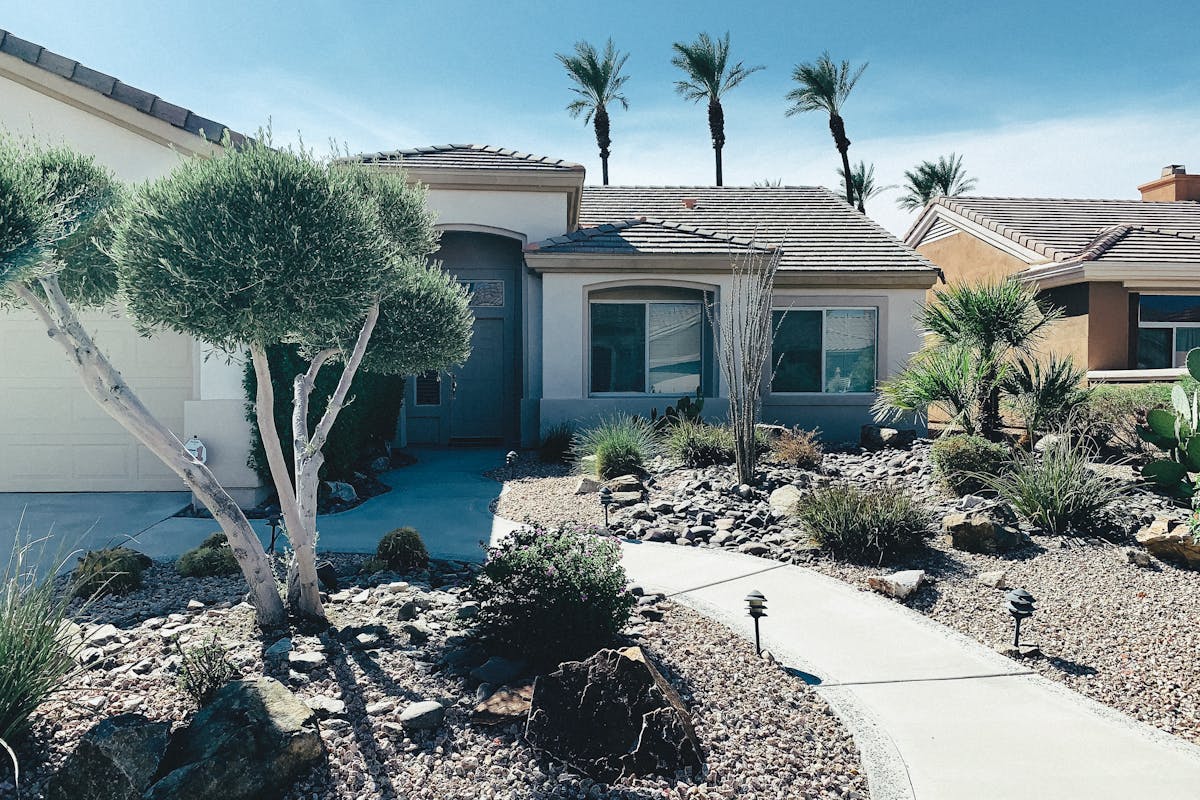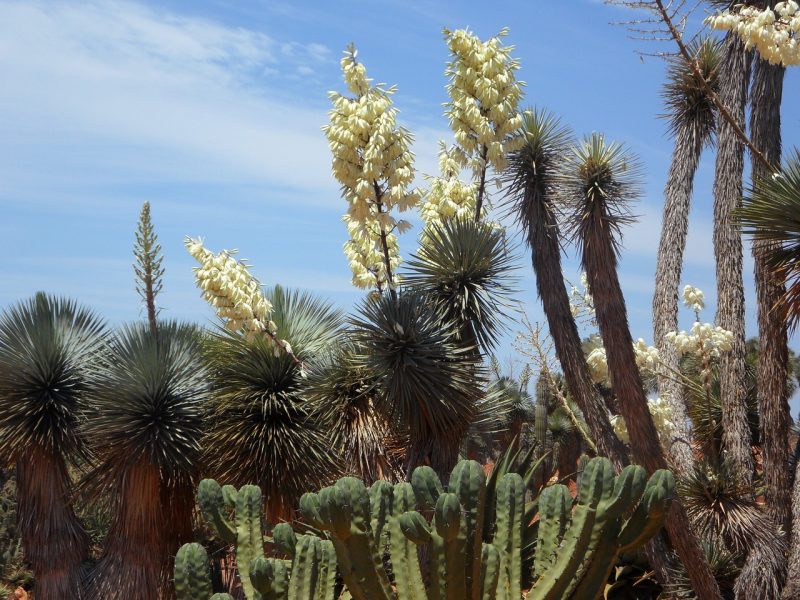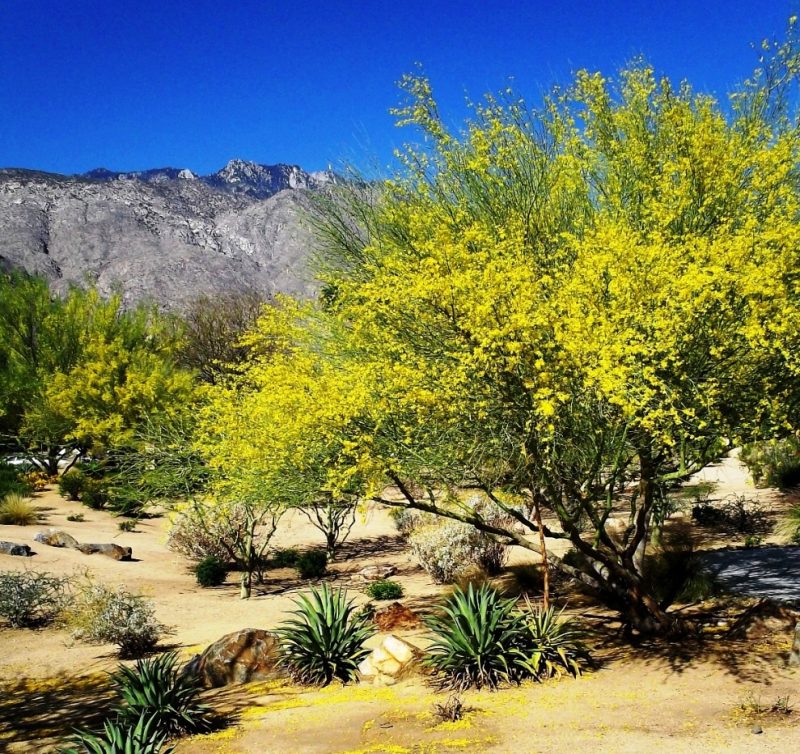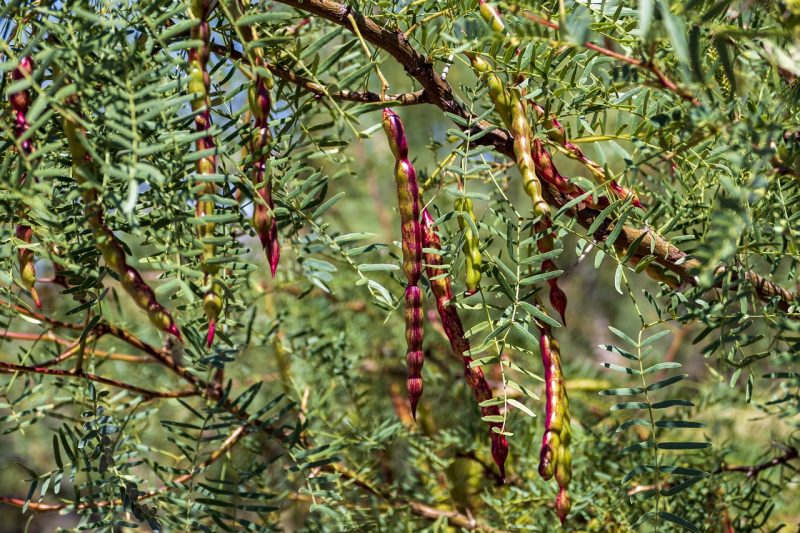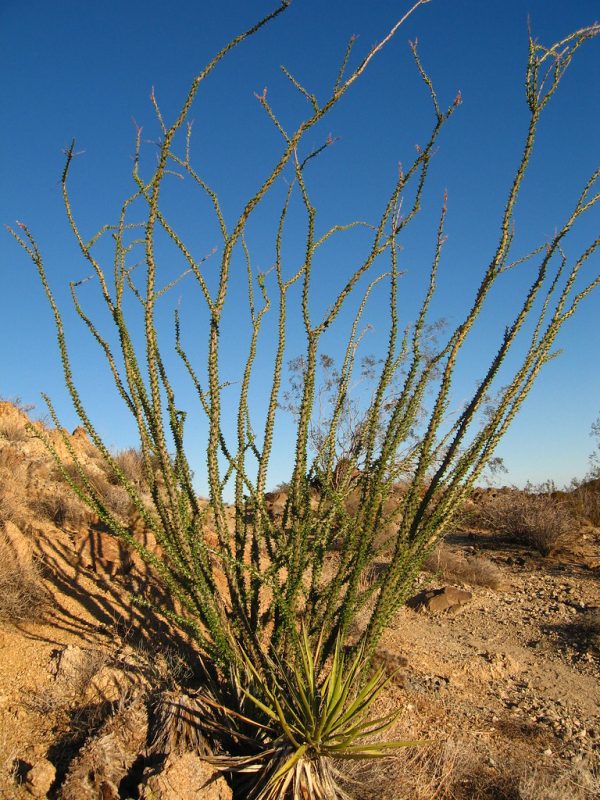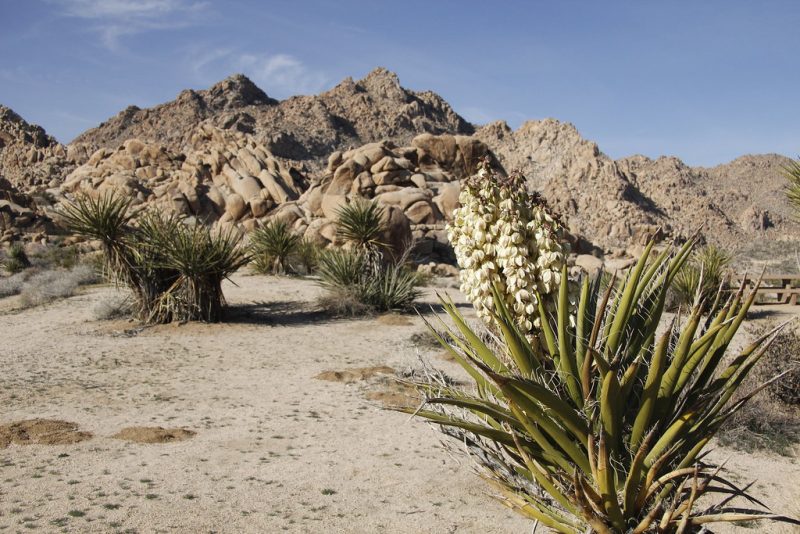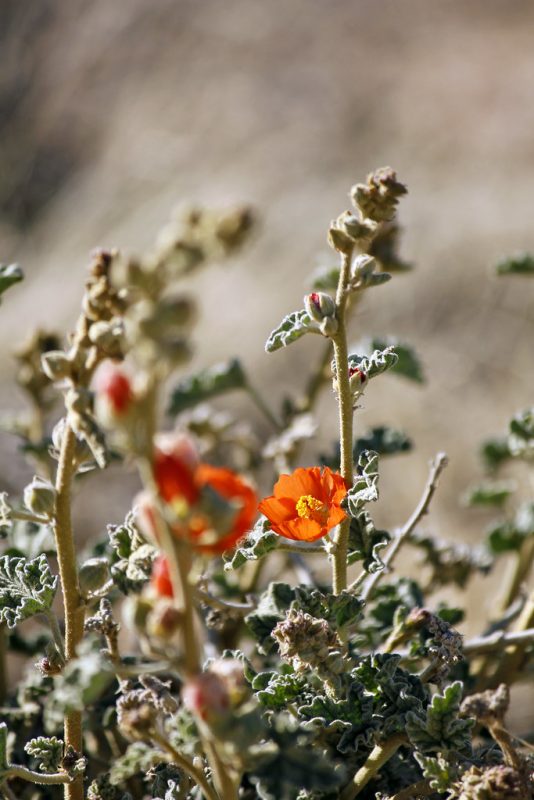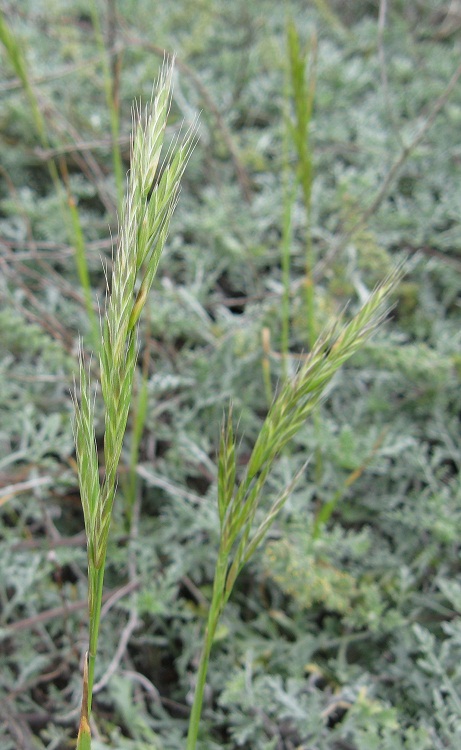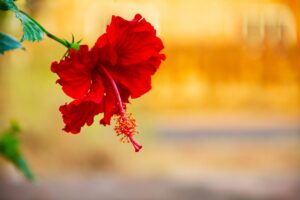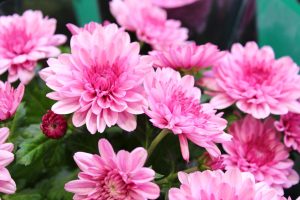This post explores a variety of desert landscaping plants, particularly focusing on succulents, cacti, and some hardy shrubs that can add both beauty and resilience to your outdoor space.
Succulents and Cacti
Succulents and cacti have become staples in desert landscaping due to their unique adaptations for water storage and their striking aesthetics. These plants not only require minimal water but also provide various textures and colors that can bring a lively essence to arid environments.
Saguaro (Carnegiea gigantea)
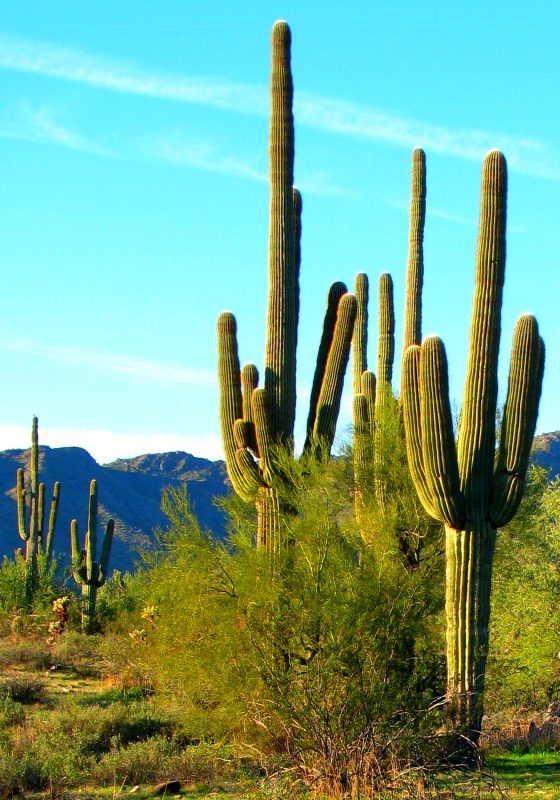
The iconic Saguaro cactus is synonymous with the American Southwest, standing tall and proud as a symbol of desert life. Known for its tall, tree-like structure that can reach heights of up to 40 feet, the Saguaro grows slowly, often taking over 50 years before it produces its first flower. These magnificent plants can live for over 150 years, making them not only a stunning addition to landscaping but also a part of the ecological history of the region. The white flowers that bloom in late spring are both fragrant and beautiful, attracting a variety of pollinators, most notably the lesser long-nosed bat, which is essential for the plant’s reproduction.
Prickly Pear (Opuntia spp.)
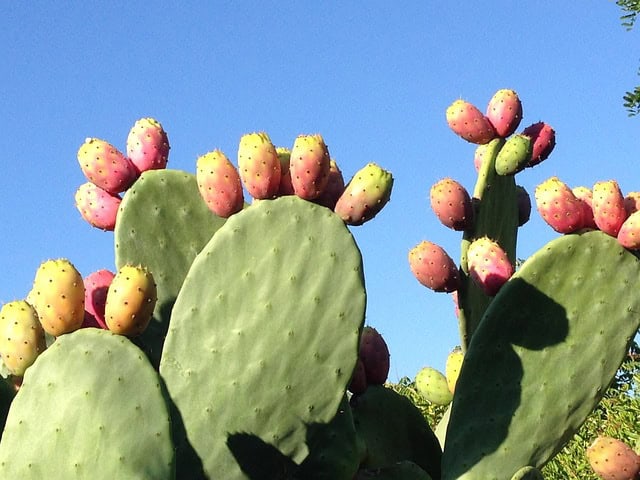
Prickly Pears are among the most versatile and resilient cacti, offering aesthetic appeal as well as practical uses. With their flat, paddle-shaped pads and vibrant flowers that range from yellow to purple, they can easily liven up any desert garden. Beyond their visual allure, many species produce edible fruits known as “tunas,” which are enjoyed in various culinary dishes ranging from salads to jams. In addition, the pads of certain varieties can be sautéed or grilled, showcasing their versatility as an edible landscape choice. For gardeners, prickly pears are low-maintenance and can thrive in poor soil, making them ideal for xeriscaping.
Agave (Agave spp.)
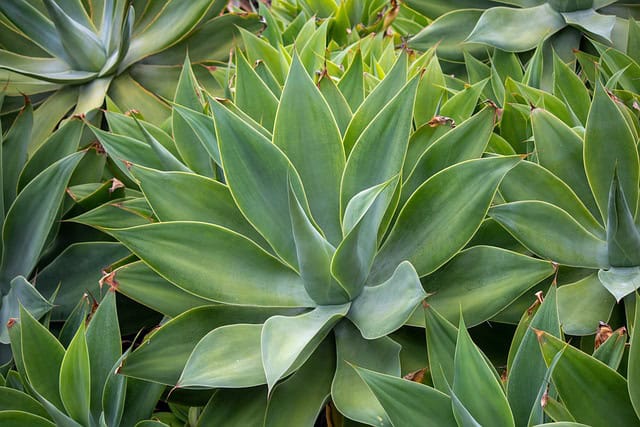
Agaves are known for their architectural beauty and striking rosettes of thick, fleshy leaves. These plants are part of the Asparagaceae family and are particularly famous for their agave nectar, which serves as a popular sugar substitute. Depending on the species, Agaves exhibit a range of colors, shapes, and sizes, from dwarf varieties that fit into small landscapes to towering giants that can dominate a garden space. Another fascinating aspect of Agaves is their reproductive cycle; many species only bloom once in their lifetime, producing an exquisite flower stalk that can reach impressive heights before dying back. This unique lifecycle creates an opportunity for remarkable visual displays in a garden, while their drought tolerance and minimal care needs enhance their appeal to desert gardeners.
Aloe Vera (Aloe barbadensis)
Aloe Vera is much more than just a pretty face in desert landscaping. Renowned for its medicinal properties, particularly in skin care, Aloe Vera also presents beautiful, spiky rosettes that can add a soft contrast to harsher desert species. With minimal water needs and a preference for bright, indirect sunlight, this succulent adapts well to both potted arrangements and in-ground landscapes. Its gel-filled leaves provide a soothing remedy for burns and skin irritations, making it a fantastic choice for a home garden where health and wellness are a priority. Additionally, some gardeners use Aloe as an effective border plant due to its low maintenance and resilient nature.
Echeveria (Echeveria spp.)

Echeverias soar in popularity among desert landscaping due to their stunning rosettes, which come in various vibrant colors and fascinating shapes. These succulents are ideal for rock gardens, containers, or as ground cover, as they spread out elegantly while maintaining a compact structure. Their ability to thrive in full sun with minimal water makes them an ideal choice for gardeners looking to incorporate visual interest without the worry of complex care. Furthermore, their flowers—often appearing on long, arching stems—add an additional layer of beauty, attracting bees and hummingbirds eager for nectar.
Yucca (Yucca spp.)
Yucca plants are another exceptional choice for desert landscaping, known for their sword-like foliage and impressive flower spikes. These hardy perennials thrive in sandy and rocky soils, requiring little water beyond what nature provides. Their thick, resilient leaves are perfect for adding a dramatic touch to landscapes, while the tall stalks adorned with clusters of white or creamy blossoms can reach up to 10 feet in height, providing vertical interest. Additionally, Yucca roots can be utilized for soap production, and their fibers were historically used by Native Americans for weaving baskets and making textiles, reminding us of the plant’s important place in both ecology and culture.
Christmas Cactus (Schlumbergera bridgesii)
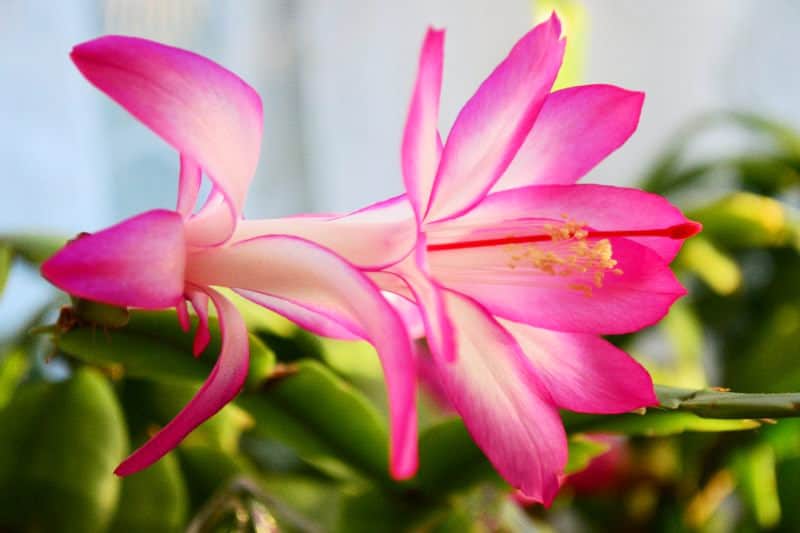
Contrary to its name, the Christmas Cactus is not a traditional desert plant but can thrive in drier conditions if cared for properly. This unique succulent is actually a forest cactus, native to the humid rainforests of Brazil. Despite its origin in moist environments, it has won the hearts of desert gardeners for its ability to adapt and produce stunning blooms during the holiday season. The vibrant flowers typically appear in shades of pink, red, and white, creating a festive display that contrasts beautifully with the muted colors of the desert landscape. To thrive, the Christmas Cactus prefers a slightly more humid environment than its desert counterparts and should be protected from direct afternoon sunlight, as this can scorch its leaves. With proper care, it can be a striking focal point in both indoor and outdoor settings, demonstrating that even in a desert landscape, there is room for unique and adaptable plants.
Pincushion Cactus (Mammillaria spp.)
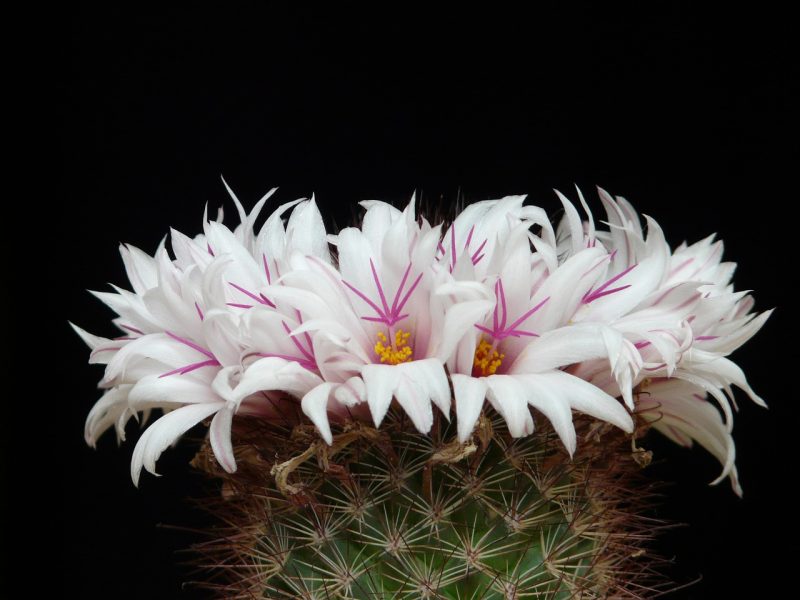
Pincushion cacti are small, globular cacti that pack a visual punch with their dense spines and delightful flowers. Ranging from a few inches to a couple of feet in height, these cacti are ideal for rock gardens or as part of a mixed succulent arrangement. Their small stature makes them perfect for container gardening, allowing for versatile design options. Pincushion cacti are known for their resilience and can tolerate a range of soil types, thriving in well-drained conditions. With vibrant blooms that come in a range of colors including yellow, pink, and white, these cacti attract pollinators, enhancing biodiversity in your garden while providing year-round interest.
Bunny Ear Cactus (Opuntia microdasys)
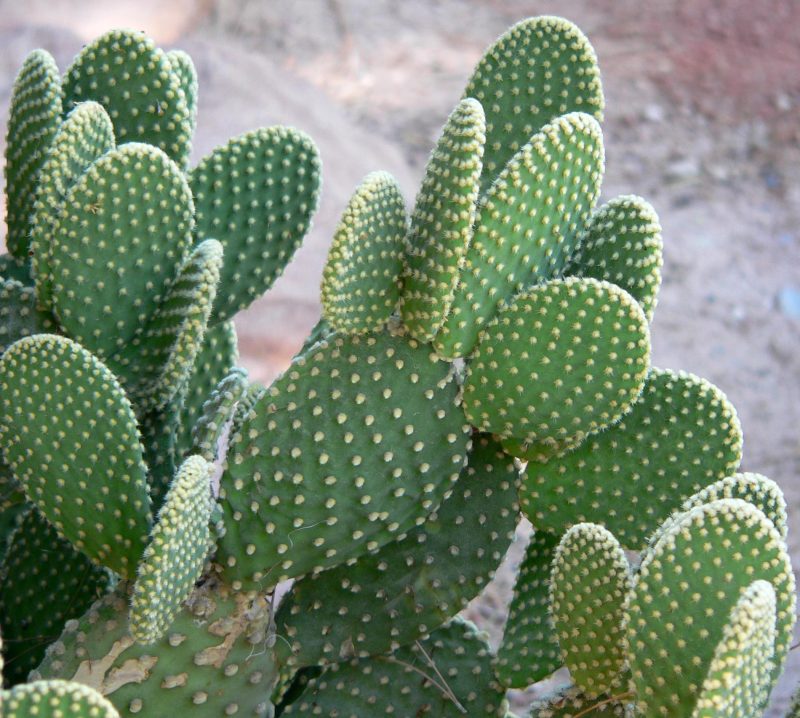
The Bunny Ear Cactus is a charming addition to any desert landscape, aptly named for its distinctive pads that resemble bunny ears. This low-maintenance cactus features a bushy appearance and can grow to about three feet tall, making it a playful and eye-catching option. The pads are typically covered in tiny spines, or “glochids,” which can detach easily, requiring care in handling. The Bunny Ear Cactus produces beautiful yellow or pink flowers in the spring, followed by edible fruit known as “tunas.” These fruits can be safely foraged, adding a culinary aspect to your landscape and a unique opportunity for outdoor cooking and tasting experiences.
Texas Sage (Leucophyllum frutescens)
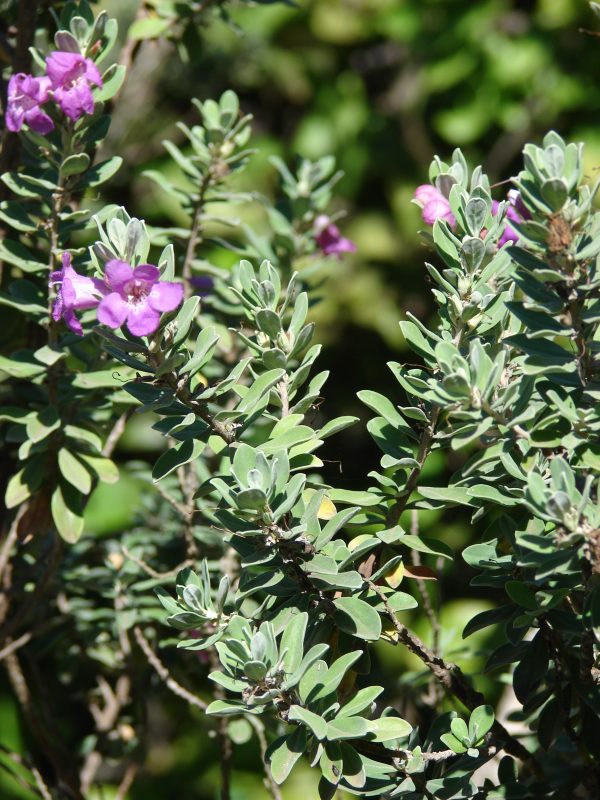
Texas Sage, also known as Cenizo or Barometer Bush, brings a burst of color and texture to desert landscapes with its silvery-green foliage and vibrant purple flowers. This woody shrub thrives in hot, dry conditions, making it perfect for xeriscaping projects. One of the most captivating features of Texas Sage is its ability to bloom in response to rainfall; a phenomenon that showcases its unique adaptability to its environment. Flowers typically appear in late spring and again in late summer, delivering stunning displays that attract butterflies and bees. Texas Sage requires little water once established, and its drought tolerance ensures it remains a low-maintenance option that enhances the ecological resilience of any desert garden.
Drought-Tolerant Trees
In addition to succulents and cacti, drought-tolerant trees play an essential role in creating a resilient desert landscape. These trees not only provide shade and visual interest but also help stabilize the soil and create habitats for wildlife. Each species brings its unique characteristics and benefits, making them valuable additions to arid gardens.
Palo Verde (Cercidium spp.)
Palo Verde, or “green stick,” is a remarkable tree well-suited to desert landscaping due to its unique photosynthetic bark. This adaptation allows the tree to survive in extremely dry conditions by performing photosynthesis through its green trunk and branches, reducing reliance on leaves. Palo Verde trees can reach heights of 15 to 30 feet, creating a beautiful canopy while offering dappled shade. Their bright yellow flowers, which bloom in the spring, attract bees and other pollinators, fostering biodiversity in the garden. Additionally, these trees are known for their intricate branching patterns, adding an artistic touch to any outdoor space. Palo Verde is also notable for its ability to thrive in poor soils, making it an ideal choice for xeriscaping.
Desert Willow (Chilopsis linearis)
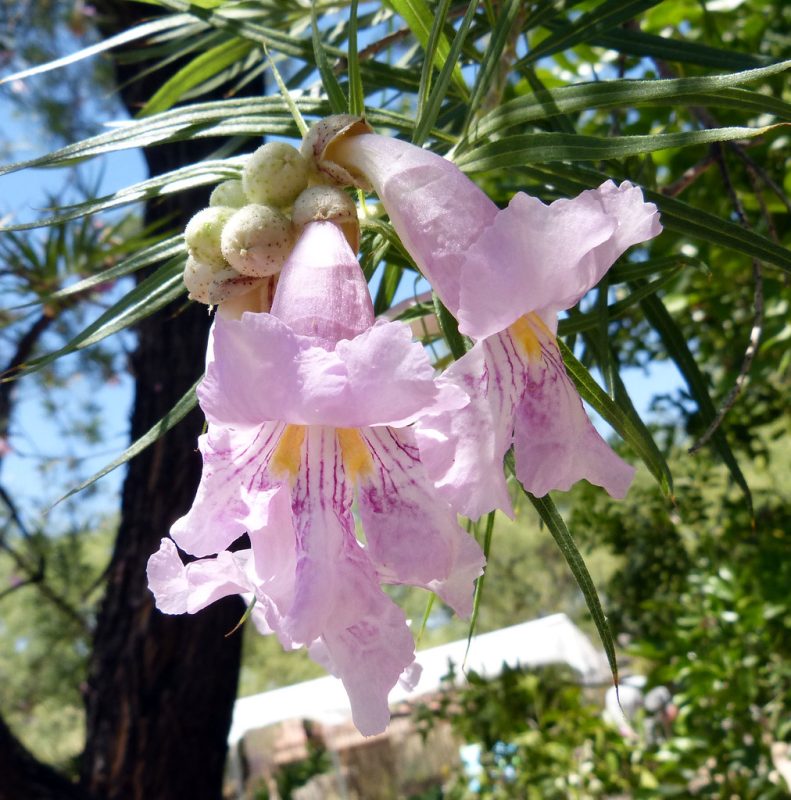
The Desert Willow is a stunning small tree or large shrub characterized by its long, slender leaves and trumpet-shaped flowers that bloom in hues of pink, lavender, and white. This tree typically reaches a height of 15 to 25 feet and is well-adapted to the hot and arid conditions of the desert. The flowers of the Desert Willow are highly attractive to hummingbirds and butterflies, making it an excellent choice for gardeners looking to enhance wildlife habitat. In addition to its beauty, the Desert Willow is remarkably resilient, tolerating drought conditions and thriving with minimal care. Its graceful form and cascading branches provide a soft, elegant appearance, perfect for creating inviting garden spaces.
Mesquite (Prosopis spp.)
Mesquite trees are synonymous with desert landscapes, renowned for their striking form and adaptability. These robust trees can grow anywhere from 20 to 40 feet tall, with distinctive twisted trunks and feathery foliage that provides ample shade. Mesquite trees are nitrogen-fixing, enriching the soil in which they grow, which can be beneficial for surrounding plants. Furthermore, the sweet, edible pods produced by Mesquite trees can be ground into flour, offering a unique culinary application. These trees support numerous wildlife species, serving as a vital food source for birds and small mammals. With their deep root systems, Mesquite trees also help prevent soil erosion, making them an excellent choice for sustainable landscaping in desert regions.
Desert Ironwood (Olneya tesota)
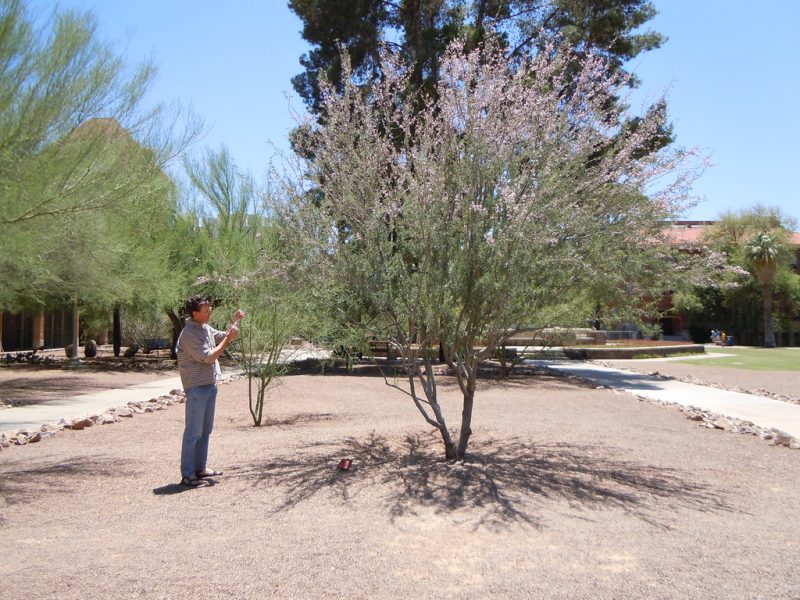
Desert Ironwood is a unique tree that flourishes in the Sonoran Desert, showcasing its impressive adaptability to dry environments. Known for its dense, hard wood, Desert Ironwood is often used for making fine furniture and crafts. The tree can reach heights of up to 40 feet and is easily recognizable by its twisted branches and expansive canopy, providing much-needed shade in an otherwise stark landscape. Flowering in late spring, the small purple blooms attract bees and other pollinators, making it a valuable addition to any wildlife-friendly garden. The Desert Ironwood is also an important tree for maintaining soil health, as its nutrient-rich leaf litter enhances the fertility of the ground. Its deep-rooted system promotes stability in sandy soils, helping to prevent erosion and fostering a balanced ecosystem.
Joshua Tree (Yucca brevifolia)
Perhaps one of the most iconic trees of the Mojave Desert, the Joshua Tree captivates with its distinctive appearance and impressive resilience. Belonging to the Agave family, this tree can grow to heights of 15 to 40 feet and is characterized by its branching structure, which resembles outstretched arms. Joshua Trees are not just visually striking; they are also integral to their ecosystem, serving as habitat and food for a variety of wildlife, including birds, insects, and small mammals. In spring, the trees produce tall spikes of creamy white flowers that attract pollinators and contribute to the stunning desert landscape. Moreover, the Joshua Tree thrives on minimal water and can endure substantial temperature fluctuations, making it an excellent choice for low-maintenance landscaping. As an emblem of the American Southwest, its presence adds a recognizable element to desert gardens.
Desert Shrubs
Desert shrubs are essential components of desert landscaping, offering not only beauty but also ecological benefits. These hardy plants are typically well-adapted to survive with minimal water, making them ideal for sustainable gardens. With a variety of colors, textures, and forms, desert shrubs provide visual interest while contributing to the overall biodiversity of arid ecosystems. Let’s explore some remarkable desert shrubs that can enhance your landscape.
Ocotillo (Fouquieria splendens)
Ocotillo is a distinctive and striking shrub that can grow up to 20 feet tall, characterized by its long, slender, spiny stems that resemble the skeletal fingers of a hand. While often considered a bush due to its branching form, it can also appear tree-like with its elegant stature. One of Ocotillo’s most remarkable features is its ability to flourish in extreme drought conditions; during dry periods, the plant appears dormant, shedding its leaves to conserve water. However, with the arrival of rains, it quickly sprouts emerald green leaves and vibrant coral-red flowers that bloom primarily in spring, attracting hummingbirds and butterflies. Ocotillo is effective for creating focal points in the landscape or as a natural privacy screen, thanks to its upright growth habit, while its deep root system stabilizes sandy soil.
Jojoba (Simmondsia chinensis)
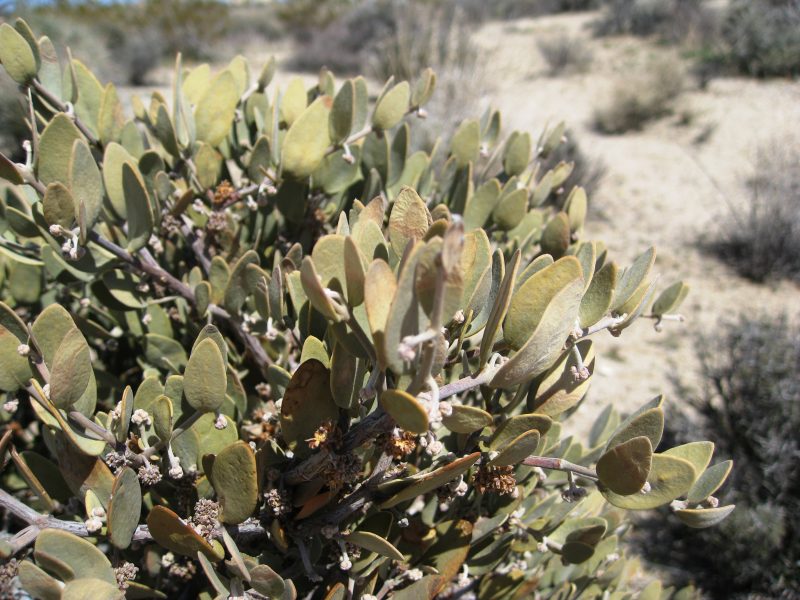
Jojoba is a versatile and hardy desert shrub that typically grows to about 3 to 10 feet tall and is well-known for its oil-rich seeds. An impressive attribute of Jojoba is its ability to thrive in arid conditions and poor soil, making it an excellent candidate for sustainable landscaping. The plant features glossy, green leaves that provide an attractive aesthetic while efficiently conserving water through their waxy surfaces. Jojoba’s seeds are edible and have long been used to create oil that has numerous applications in cosmetics, cooking, and industrial products. Additionally, Jojoba’s flowers, which produce a delightful aroma, are highlighted by their yellowish blooms in spring, attracting various pollinators, including bees. Incorporating Jojoba into your landscape can offer both beauty and practical benefits while enhancing local wildlife habitat.
Mojave Yucca (Yucca schidigera)
Mojave Yucca is a striking desert shrub distinguished by its rosette of sword-like leaves that can reach lengths of up to 3 feet. This durable plant can grow to about 8 feet tall, and in the spring, it produces a tall flower stalk adorned with clusters of creamy white blossoms that attract bees and butterflies. In addition to its visual appeal, the Mojave Yucca is known for its resilience in hot, dry environments, making it an exceptional choice for drought-resistant landscaping. Historically, Native Americans utilized various parts of the Mojave Yucca for practical purposes, including making baskets and ropes from its fibers and using its flowers and fruits for food. With its unique shape and ecological significance, Mojave Yucca adds not only an artistic flair but also cultural depth to a desert garden.
Creosote Bush (Larrea tridentata)

Creosote Bush is a quintessential desert shrub that thrives in arid landscapes across the southwestern United States and Mexico. Known for its distinct smell after rainfall, which has garnered the moniker “Desert Rain,” this resilient shrub can survive extreme temperatures and drought conditions. Creosote Bush generally grows to 3 to 10 feet tall and can live for many decades, thanks to its robust root system that allows it to tap into underground water sources. Its small, yellow-green flowers bloom in late spring, adding a delicate touch to the landscape while providing nectar for bees and butterflies. The leaves’ resinous quality contributes to the plant’s drought resistance and also helps prevent herbivory, ensuring its survival in tough conditions. In addition to its ecological benefits, Creosote is appreciated in traditional medicine by various indigenous cultures, highlighting its historical significance.
Desert Lavender (Hyptis emoryi)
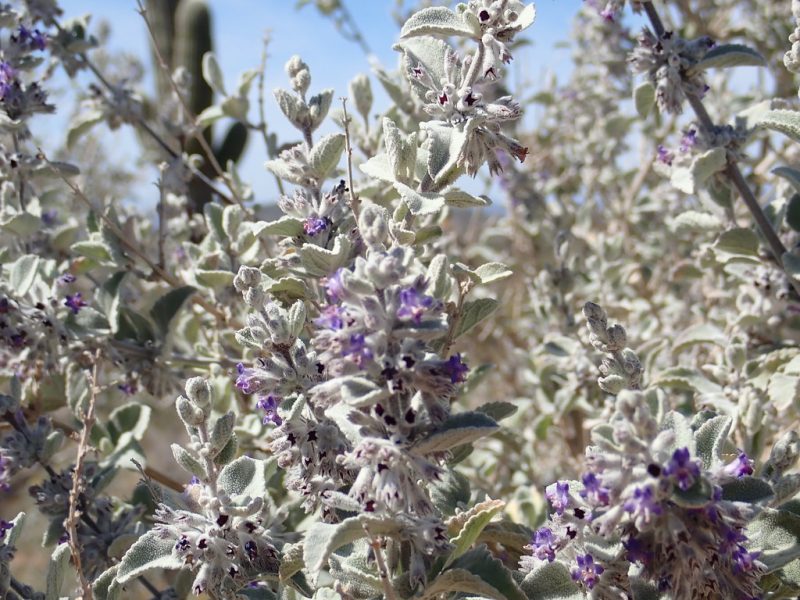
Desert Lavender is a unique and aromatic shrub that offers both visual and sensory appeal in the landscape. Growing up to 3 to 4 feet tall, this drought-resistant plant is characterized by its silvery-green foliage and delightful lavender-colored flowers that bloom from late spring to early fall. The scent of its foliage, reminiscent of true lavender, is particularly appealing and can create a fragrant oasis in desert gardens. Desert Lavender is often used to attract pollinators, including bees and butterflies, enhancing biodiversity and creating a dynamic ecosystem. Additionally, this shrub’s heat tolerance and low water requirements make it an ideal choice for sustainable gardening. Its sprawling growth habit provides excellent ground cover or can define pathways, adding charm and aesthetic interest to any desert landscape.
Ground Covers
Ground covers are essential elements in desert landscaping, serving multiple functions, such as preventing soil erosion, reducing water evaporation, and suppressing weeds. Additionally, they contribute to the beauty of arid gardens with vibrant colors and interesting textures. Choosing the right ground covers can create a lush, cohesive look while offering ecological benefits and minimizing maintenance requirements. Here are some exceptional ground covers perfect for desert environments.
Desert Marigold (Baileya multiradiata)

Desert Marigold is a resilient perennial that can transform dry areas into stunning displays of golden blooms. Typically reaching heights of 1 to 3 feet, this ground cover is characterized by its vibrant yellow flowers that bloom from early spring to fall. The daisy-like flowers attract various pollinators, including butterflies and bees, making it an invaluable addition to a wildlife-friendly garden. The silvery-green foliage is not only aesthetically pleasing; it also provides a striking contrast against the bright blooms. Desert Marigold thrives in poor soils and requires minimal water, making it well-suited for xeriscaping. By using Desert Marigold, gardeners can achieve an eye-catching carpet of color that enhances the overall landscape while promoting sustainability.
Globe Mallow (Sphaeralcea ambigua)
Globe Mallow is a charming desert perennial that flourishes in arid conditions, making it an excellent choice for ground cover in sunny areas. Growing to about 2 feet in height, it features soft, velvety leaves and stunning, cup-shaped flowers that vary in color from bright orange to soft peach. The blooms generally appear in spring and can persist through summer, adding vibrancy to the landscape. Globe Mallow thrives in well-draining soils and is highly drought-tolerant. Its adaptability allows it to flourish in rough, rocky areas, where it can help stabilize the soil, making it particularly useful for erosion control. The foliage is also valued for its unique texture, providing depth to garden compositions. By incorporating Globe Mallow into a desert landscape, you can create a colorful and resilient ground cover that enhances the aesthetic and ecological value of your space.
Mexican Gold Poppy (Eschscholzia californica)
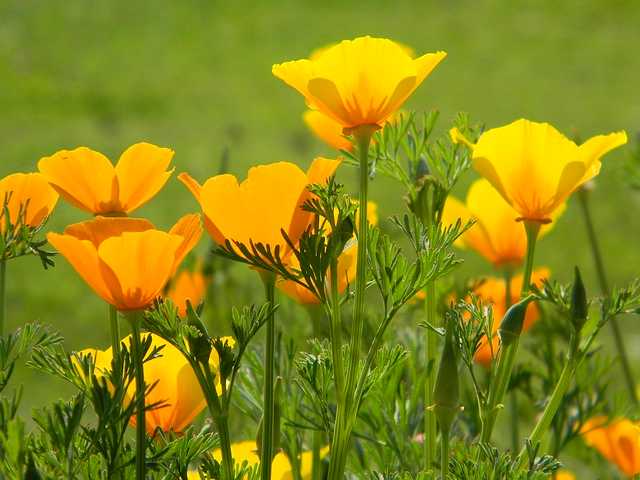
Mexican Gold Poppy is an enchanting annual that produces bright yellow to golden-orange flowers that bloom abundantly in the spring, creating a dazzling show of color. This ground cover typically grows between 1 to 2 feet tall and spreads easily, making it an excellent addition for filling in bare patches of ground and creating vibrant swaths of color across the landscape. The poppy flourishes in full sun and well-draining soils, requiring minimal water once established, making it an ideal choice for desert settings. In addition to its beauty, the Mexican Gold Poppy is known for attracting pollinators and provides food for a variety of wildlife. When the blooms fade, the seed pods add continued interest to the garden and can self-seed, ensuring a splash of color returns each spring. Integrating Mexican Gold Poppy into your garden not only enhances the visual appeal but also supports biodiversity.
Red Yucca (Hesperaloe parviflora)

Red Yucca is a spectacular evergreen perennial that serves both as a striking ground cover and a focal point in desert landscaping. Growing to heights of about 3 to 5 feet, its narrow, arching leaves create a dramatic effect, while the tall flower spikes can reach up to 5 feet and produce tubular, coral-red flowers that attract hummingbirds and bees. Red Yucca thrives in well-drained, sandy soils and is highly drought-resistant, making it an excellent choice for sustainable gardening practices. Its adaptability to various soil types and tolerance to extreme heat make it a valuable plant for xeriscaping. As a low-maintenance ground cover, Red Yucca enhances the visual richness of the landscape while promoting pollinator activity in the garden, creating an enticing environment for wildlife.
Blue Daze (Evolvulus glomeratus)
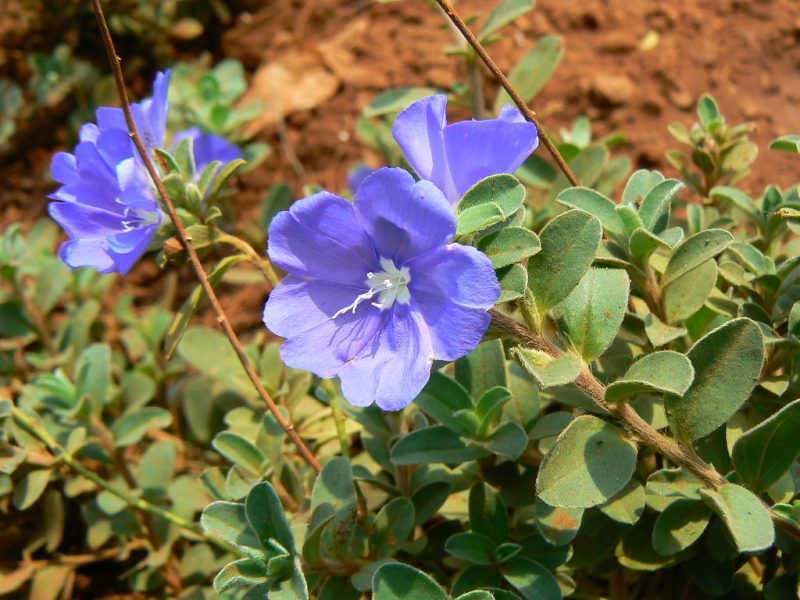
Blue Daze is a delightful trailing perennial that brings an element of brilliance to desert landscapes with its vibrant blue flowers that bloom from spring through fall. This ground cover typically grows to a height of about 6 to 12 inches but can spread significantly, reaching up to 2 feet wide, making it perfect for cascading over borders or filling in container gardens. The foliage boasts a velvety texture and rich green color, providing a lush backdrop to the stunning blue blooms. Blue Daze thrives in full sun and well-drained soils, demonstrating excellent drought tolerance once established. This plant not only offers a striking color contrast in landscapes but also attracts butterflies and other pollinators, supporting local biodiversity. Its low-growing habit makes Blue Daze an ideal choice for ground cover, adding charm and elegance to any desert garden.
Vines
Vines can add vertical interest, texture, and color to desert landscapes—attributes that are often underutilized in arid environments. These climbing plants are capable of enhancing walls, trellises, and other structures while providing shade, privacy, and support for wildlife. Selecting appropriate vines is essential to achieving a thriving and visually striking garden in desert settings. Here are some vibrant and resilient vine options that beautifully complement desert landscaping.
Trumpet Vine (Campsis radicans)
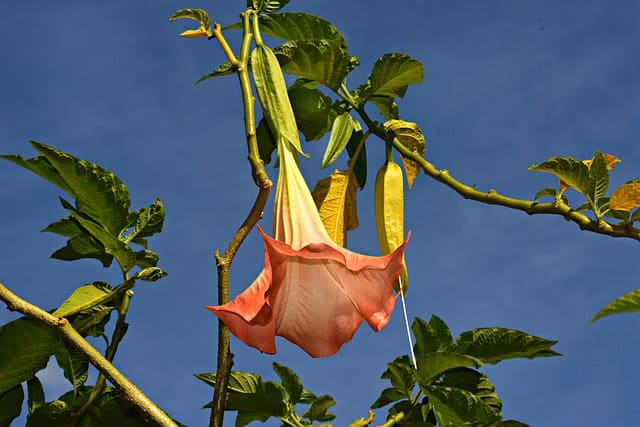
Trumpet Vine is a vigorous and stunning option for desert landscaping, known for its flamboyant, tubular flowers that bloom in vibrant shades of orange and red. This deciduous vine can rapidly cover structures or fences, making it ideal for gardeners looking to add a punch of color. The flowers of the Trumpet Vine bloom from late spring to early fall and are particularly attractive to hummingbirds, butterflies, and other pollinators. It thrives in well-drained soils and full sun, demonstrating remarkable drought tolerance once established. Though it can be aggressive, careful pruning can keep it in check and encourage more bloom production. Incorporating Trumpet Vine into your landscape will not only create a stunning visual display but also support local wildlife through its nectar-rich flowers.
Honeysuckle (Lonicera spp.)
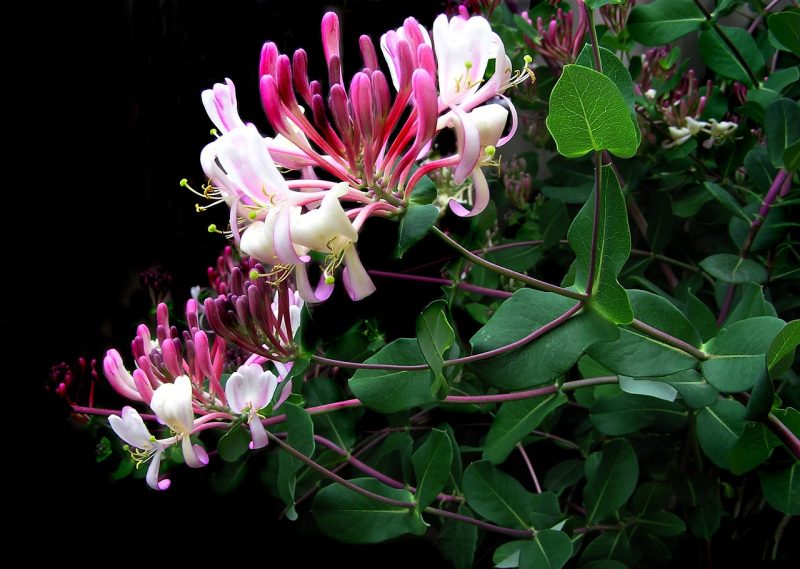
Honeysuckle vines are a versatile choice for desert gardens, known for their sweet-scented flowers and attractive foliage. Various species, such as the native Lonicera reticulata, thrive in arid conditions and can flourish in a wide range of soil types. The tubular flowers, which bloom from spring to fall, produce vibrant colors that range from yellows and whites to pinks and reds, providing continuous visual interest throughout the growing season. Honeysuckle is especially popular for attracting bees and hummingbirds, enhancing the biodiversity of your garden. Its twining growth habit allows it to cover trellises, fences, or arbors elegantly, creating a lush backdrop for other plants. With drought tolerance and low maintenance needs, Honeysuckle is an excellent choice for those seeking to enhance their desert landscape with fragrant blooms and ecological benefits.
Passionflower (Passiflora spp.)

Passionflower is a unique and exotic vine that brings an air of intrigue to desert landscaping with its intricate, star-shaped blooms and distinctive foliage. Many species flourish in arid climates, such as Passiflora caerulea, which can tolerate heat and drought once established. The striking blue and white flowers, often accented with purple or yellow, bloom throughout the summer and are not only stunning but also attract a variety of pollinators, including bees. Some species produce edible fruits, commonly known as passionfruit, providing additional aesthetic and culinary value to the garden. Passionflower can be used to cover arbors, trellises, or even as ground cover if allowed to spread along the ground. Incorporating this vine into your desert landscape not only creates a tropical feel but also supports wildlife.
Lady Banksia Rose (Rosa banksiae)
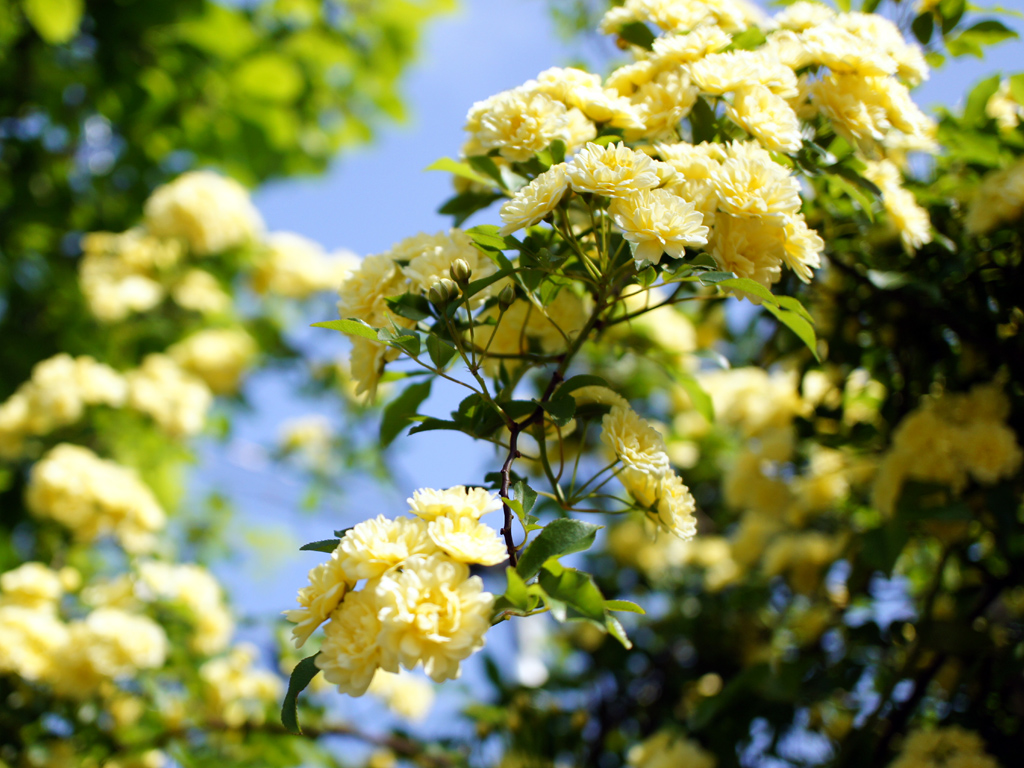
The Lady Banksia Rose is a delightful and vigorous vine that brings a touch of romance to desert landscapes. This evergreen vine features delicate, yellow or white flowers that bloom profusely in the spring, creating a breathtaking display. Unlike traditional climbing roses, the Lady Banksia Rose is thornless, making it easier to manage while adorning fences, arbors, and trellises with cascading flowers. Its vigorous growth habit provides excellent cover and can even serve as a privacy screen or windbreak. Thriving in full sun, this rose variety is exceptionally drought-tolerant once established, requiring little water to flourish. The subtle scent of its flowers adds another layer of sensory appeal to the garden, attracting beneficial pollinators. By incorporating Lady Banksia Rose into your landscaping, you can enjoy the elegance of roses while benefiting from their robust nature, making it a perfect addition to any desert setting.
Flowering Plants
Flowering plants play a pivotal role in desert landscaping, offering splashes of color, attracting wildlife, and enhancing the overall aesthetic appeal of arid gardens. Selecting the right flowering varieties is crucial to ensuring they thrive under the intense sun and limited water availability typical of desert environments. Here are some remarkable flowering plants that are well-suited to desert landscaping, each bringing unique characteristics and beauty to your garden.
Lantana (Lantana camara)
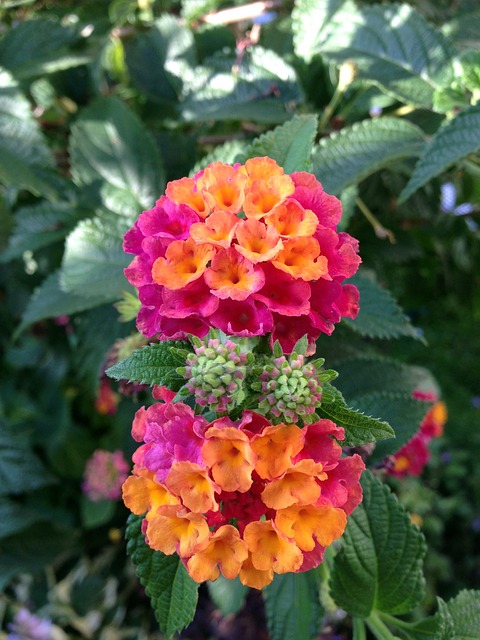
Lantana is a vibrant and hardy flowering plant that flourishes in a variety of climates, particularly in warm, dry regions. Known for its clusters of colorful blooms that can be orange, yellow, pink, or purple, Lantana showcases a unique ability to adapt its flower color based on environmental conditions—making every blooming season a little different. This perennial plant reaches heights of about 2 to 4 feet and forms a dense, bushy growth that can serve as an effective ground cover or shrub. Beyond its beauty, Lantana is highly attractive to butterflies and other pollinators, providing crucial support to local ecosystems. Its drought-tolerance further makes it an ideal choice for water-efficient gardens, while its ability to thrive in poor soils allows for low-maintenance landscaping. Integrating Lantana into your desert garden will result in a colorful haven that will continuously attract fascinating wildlife.
Zinnia (Zinnia spp.)
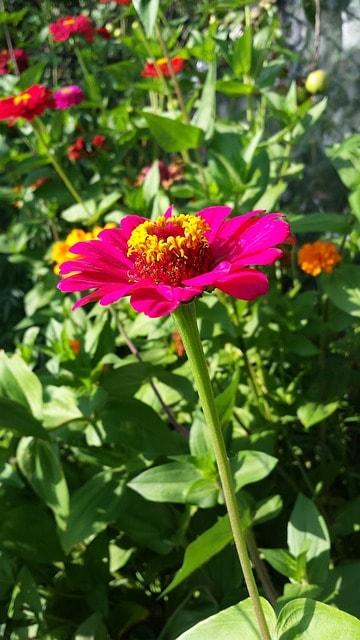
Zinnias are cheerful and cheerful annuals that bring a burst of color to desert landscapes, blooming in a myriad of hues such as red, orange, yellow, and pink. These hardy plants thrive in full sunlight and well-drained soil, making them suitable for hot, dry conditions. Zinnias can grow anywhere from 1 to 3 feet tall, depending on the variety, and their flower heads can range from petite dainty blooms to large pom-pom shapes. They are also known to attract a wide variety of pollinators, including bees and butterflies, contributing to the biodiversity of your garden. With their ability to withstand drought, Zinnias require minimal watering once established, making them an excellent choice for those looking to maintain a vibrant garden with lower water usage. Planting Zinnias not only adds a kaleidoscope of colors but also fosters an environment that supports beneficial insects.
Marigold (Tagetes spp.)
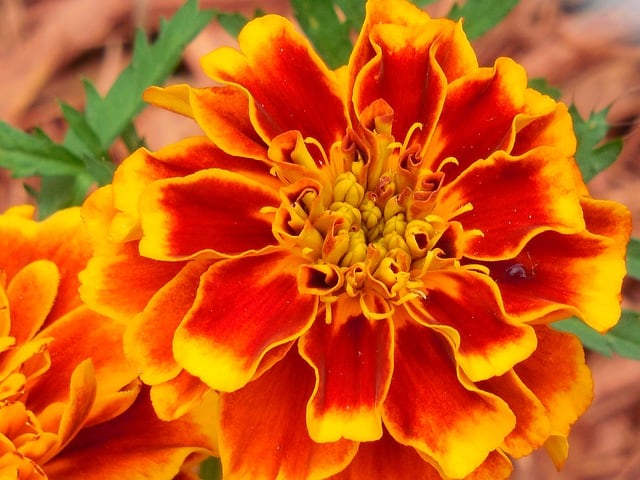
Marigolds are beloved for their vibrant flowers and their role in companion planting due to their natural pest-repelling properties. These annuals typically bloom in shades of yellow, orange, or red and can range in height from 6 inches to 3 feet, depending on the variety. Marigolds thrive in sunny locations and well-draining soil, showing impressive resilience in hot and dry conditions. The aromatic foliage of Marigolds not only enchants the senses but also acts as a deterrent to unwanted insects, helping protect neighboring plants in a garden setting. They are especially known for attracting pollinators like bees, adding to the ecological richness of your landscape. Incorporating Marigolds into your desert garden can provide ongoing color from early spring until frost while simultaneously promoting a healthy growing environment.
Sunflower (Helianthus annuus)
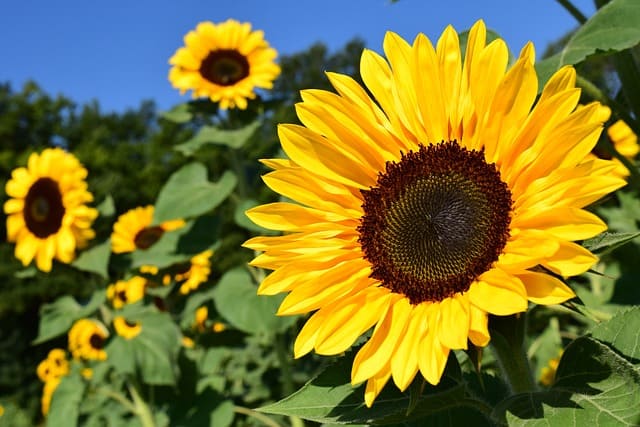
Sunflowers are iconic flowering plants that evoke warmth and nostalgia, with their cheerful yellow petals reaching towards the sun. These annual giants can grow up to 10 feet tall, depending on the variety, and are perfect for making a bold statement in any desert landscape. Sunflowers thrive in full sun and are excellent for attracting bees, butterflies, and birds, enriching the biodiversity of your garden. Moreover, they are well-suited for dry environments, requiring moderate watering once established, thanks to their deep root systems. One of the most appealing characteristics of Sunflowers is their versatility; they can be used as a screen, background, or even as a focal point in mixed flower beds. Beyond their beauty, the seeds of Sunflowers are edible and can provide a nutritious snack for both humans and wildlife. Integrating Sunflowers into your desert landscaping not only provides substantial visual interest but also promotes ecological interactions.
Daisy (Bellis perennis)
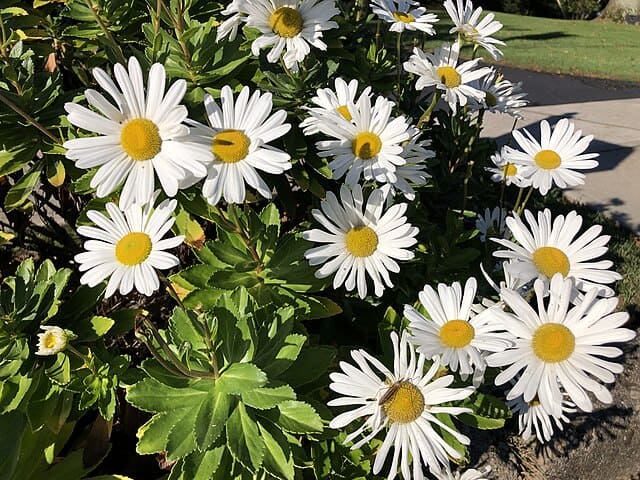
Daisies are widely recognized for their simple yet charming appearance, characterized by white petals with vibrant yellow centers. While traditional Daisies thrive in various climates, certain varieties, such as African Daisies (Osteospermum), are particularly well-suited for desert settings. African Daisies adapt well to hot, dry conditions and offer an expansive range of colors beyond the classic white, including pinks, purples, and yellows. Growing to a height of about 12 to 18 inches, these perennial plants create floral carpets that bloom profusely from spring through fall. Daisies are low-maintenance, needing minimal water once established, while their showy flowers are excellent for attracting pollinators. Incorporating Daisies into your desert landscape can create an inviting and uplifting atmosphere, providing a cheerful garden space filled with vibrant color and life.
Grasses
In desert landscaping, grasses can play a critical role in enhancing the visual appeal, functioning as a ground cover, and providing a habitat for wildlife. Choosing the right grass species is essential, as these plants must thrive in arid conditions while adding texture and depth to the garden aesthetic. Fortunately, several grass varieties are well adapted to dry climates and can contribute to an environmentally friendly landscape. Here are five exceptional grasses that boast both resilience and beauty in desert environments.
Blue Grama Grass (Bouteloua gracilis)
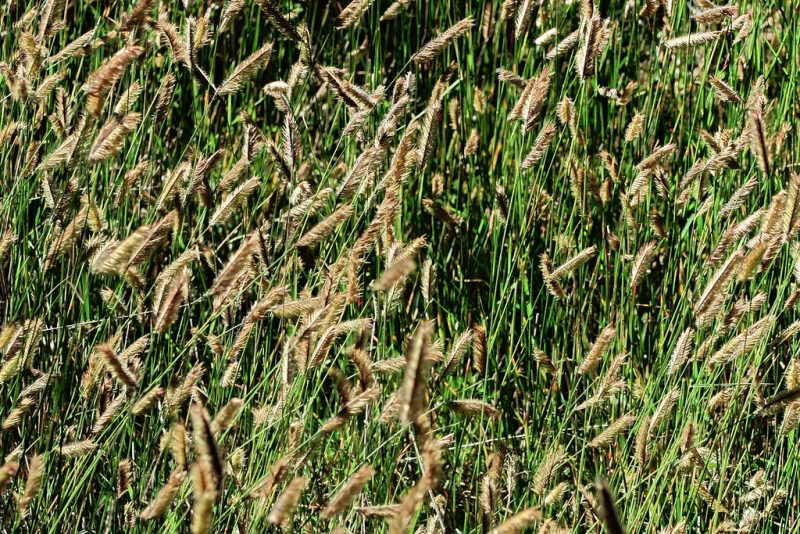
Blue Grama Grass is a native perennial grass that is particularly well-suited for low-water desert gardens. It typically grows 1 to 2 feet tall and features distinctive seed heads that resemble spikes, blooming in late summer to early fall. Its fine-textured foliage creates a lush appearance, with a blue-green hue that adds elegance to the landscape. Blue Grama is notable for its drought resistance, thriving in well-draining soils and requiring minimal irrigation. This grass not only provides habitat for small wildlife but also offers erosion control due to its extensive root system. Its adaptability makes it a popular choice for prairie-style gardens and a low-maintenance option for homeowners looking to enhance their desert landscaping while promoting biodiversity.
Buffalo Grass (Bouteloua dactyloides)
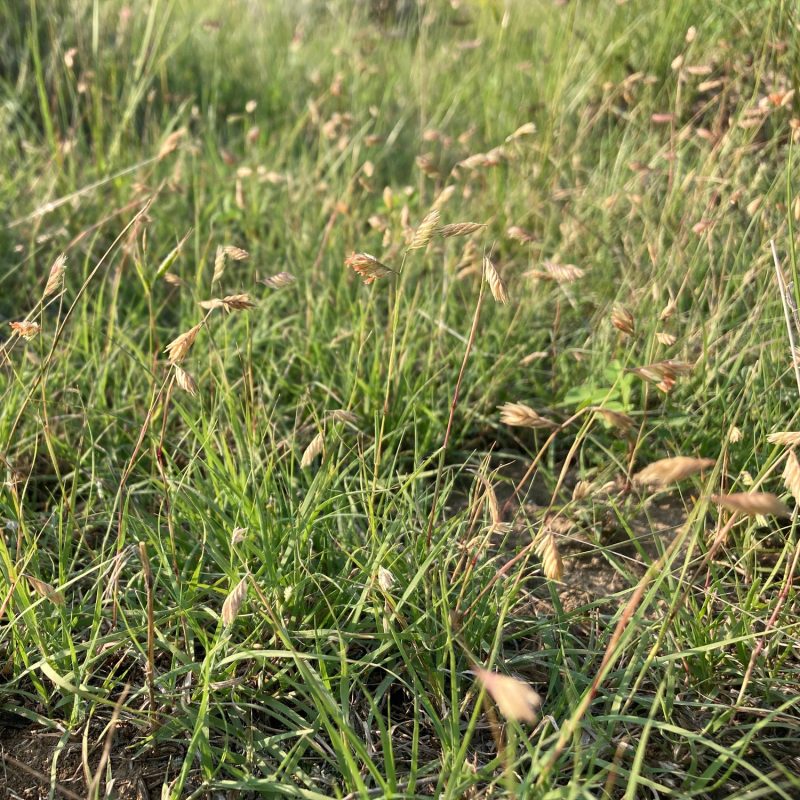
Buffalo Grass is a robust perennial grass that forms a dense mat of fine-textured, blue-green leaves, making it a popular choice for environmentally friendly lawns in desert regions. Typically growing to a height of 6 to 12 inches, this grass thrives in full sun and well-drained soils, showcasing excellent drought tolerance. Buffalo Grass requires significantly less water than traditional turf grasses, making it an ideal option for xeriscaping. Additionally, it has a low growth habit, which means it requires minimal mowing and maintenance, contributing to a sustainable landscape. Buffalo Grass produces small, inconspicuous flowers, but its primary appeal lies in its ability to create a lush, green carpet that can withstand foot traffic, making it suitable for residential yards or public green spaces in arid climates.
Desert Brome Grass (Bromus arizonicus)
Desert Brome Grass is a native perennial grass that thrives in the harsh conditions of the southwestern United States, making it an excellent addition to desert landscaping. This grass typically reaches heights of 1 to 3 feet and displays lush green foliage that turns golden in the fall, providing seasonal interest. Desert Brome has a robust root system that helps with moisture retention in the soil, showcasing its ability to survive in dry environments. Its adaptability to various soils, coupled with its tolerance for poor conditions, makes it a low-maintenance option for gardeners looking to enhance the biodiversity of their landscape. Additionally, this grass is highly beneficial for wildlife, serving as a food source and habitat for various bird species and small mammals. Incorporating Desert Brome into your garden can contribute to a sustainable ecosystem while adding a natural elegance to the landscape.
Switch Grass (Panicum virgatum)
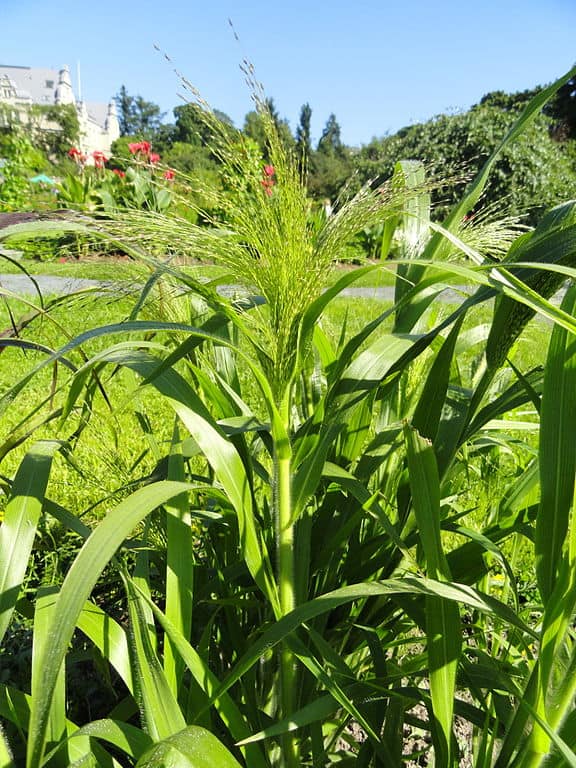
Switch Grass is a versatile and ornamental grass that can bring striking beauty to desert gardens. Growing to heights of 4 to 6 feet, it features arching, linear leaves and produces feathery flower plumes that add an airy feel to the landscape during late summer and fall. Best suited for sunny areas with well-drained soils, Switch Grass is known for its excellent drought tolerance once established, making it a resilient choice for arid climates. Its extensive root system not only provides stability and erosion control but also helps improve soil health by enhancing its structure. Switch Grass is also a valuable habitat for wildlife, attracting birds and beneficial insects. Incorporating this elegant grass into your landscaping will create visual interest and contribute to ecological sustainability, adding softness and movement to the garden.
Indian Grass (Sorghastrum nutans)
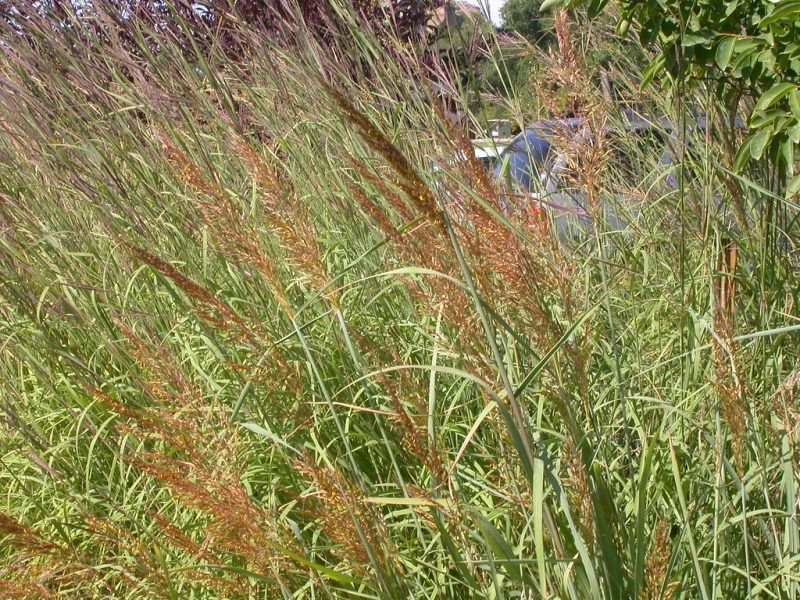
Indian Grass is a majestic native perennial that can reach heights of 3 to 6 feet, making it an excellent choice for adding height and texture to desert landscapes. Known for its striking golden-yellow flowers that bloom in late summer and tall, upright stems, Indian Grass offers a dramatic presence in any garden. It thrives in well-drained soils and full sun but demonstrates remarkable resilience in dry conditions once established. Indian Grass is often used in prairie-style gardens and is particularly effective in preventing soil erosion thanks to its robust root system. Additionally, it provides excellent habitat for various wildlife, including butterflies and birds, creating a lively ecosystem. Using Indian Grass in your desert landscaping not only enhances visual appeal through its dramatic stature but also promotes biodiversity and adds resilience to the landscape.
Additional Options
When creating a desert landscape, diverse plant choices can enhance visual interest while providing ecological benefits. Beyond the typical native plants and flowering species, there are several less conventional options that bring unique attributes to arid gardens. Below are some standout plants that can contribute to a thriving desert landscape and impress with their beauty and resilience.
Texas Star Hibiscus (Hibiscus coccineus)
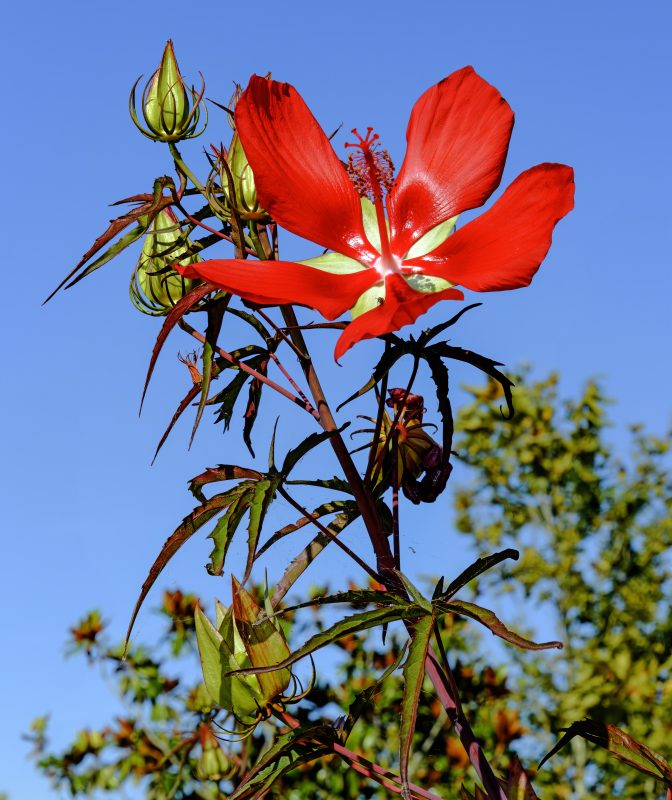
The Texas Star Hibiscus is an eye-catching perennial known for its spectacular, funnel-shaped flowers that bloom in striking shades of red. Growth can reach heights of up to 5 feet, making it an excellent focal point for any garden. Thriving in sunny conditions and wet, well-drained soils, this plant exhibits impressive humidity tolerance as well, though its capacity to withstand drought once established allows it to adapt successfully to desert gardens. Its dramatic blossoms attract hummingbirds and bees, making it not only a visual delight but also a beneficial addition for pollinator support. The Texas Star Hibiscus thrives best in the warmer months, contributing a burst of color to xeriscapes and enhancing the overall aesthetic harmony of desert landscaping.
Desert Holly (Acourtia nana)
Desert Holly is a low-growing perennial that provides a striking contrast to the often more rugged textures of desert flora. Reaching heights of only about 1 to 2 feet, it features glossy, holly-like leaves that are evergreen, providing year-round interest. This plant produces delicate, daisy-like white and pink flowers during the spring and summer, adding cheerful spots of color to the landscape. Desert Holly is exceptionally adapted to arid environments, requiring minimal water once established and thriving in full sun. Its ability to tolerate poor soil conditions makes it a fantastic addition to rock gardens or as a ground cover. Additionally, Desert Holly supports local wildlife, including pollinators and beneficial insects, fostering a healthy garden ecosystem.
Rockrose (Cistus spp.)
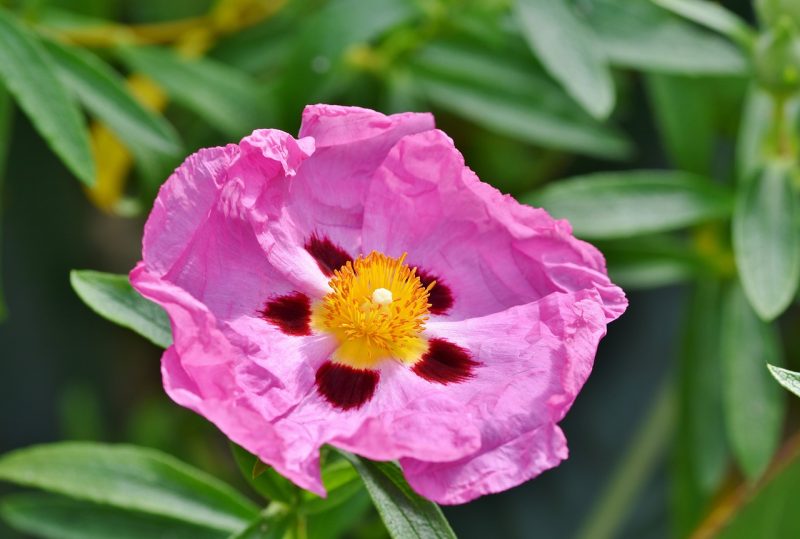
Rockrose is a hardy perennial shrub known for its resilience in harsh environments and abundant blooms. With leathery leaves and bright, papery flowers that can be white, pink, or purple, Rockrose adds a vibrant touch to desert gardens. The plant typically grows between 2 to 4 feet tall and thrives in well-draining soils with good sun exposure, demonstrating superb drought tolerance. Its flowers bloom from spring through summer, attracting bees and butterflies, which contributes to a flourishing garden environment. Rockrose’s ability to flourish in poor soil conditions makes it an ideal choice for stabilizing slopes or enhancing rugged landscapes. Choosing Rockrose for your desert garden ensures a colorful display while minimizing water needs.
Mexican Feathergrass (Nassella tenuissima)
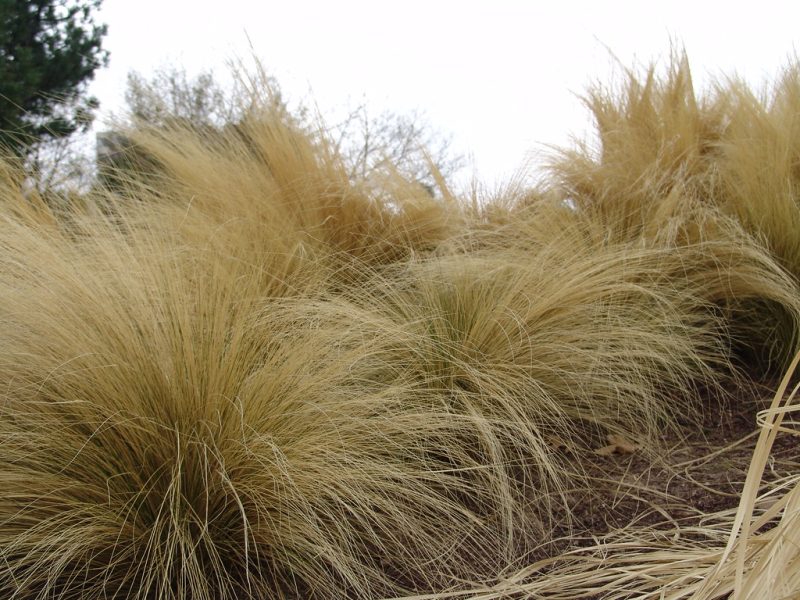
Mexican Feathergrass is a delicate, ornamental grass known for its ethereal appearance and graceful movement in the wind. Growing up to 3 feet in height, this perennial grass features fine, wispy leaves and attractive seed heads that can catch the light beautifully, creating a soft texture in the landscape. Its drought tolerance is remarkable, thriving with minimal water and only requiring occasional care to maintain its pristine appearance. Mexican Feathergrass is an excellent option for mixed borders and can be utilized effectively in naturalistic settings or as a standalone feature. This grass not only adds motion and charm to the garden but also provides habitat for birds and small wildlife, enriching the ecological dynamic of your desert landscape.
Canyon Grape (Vitis arizonica)
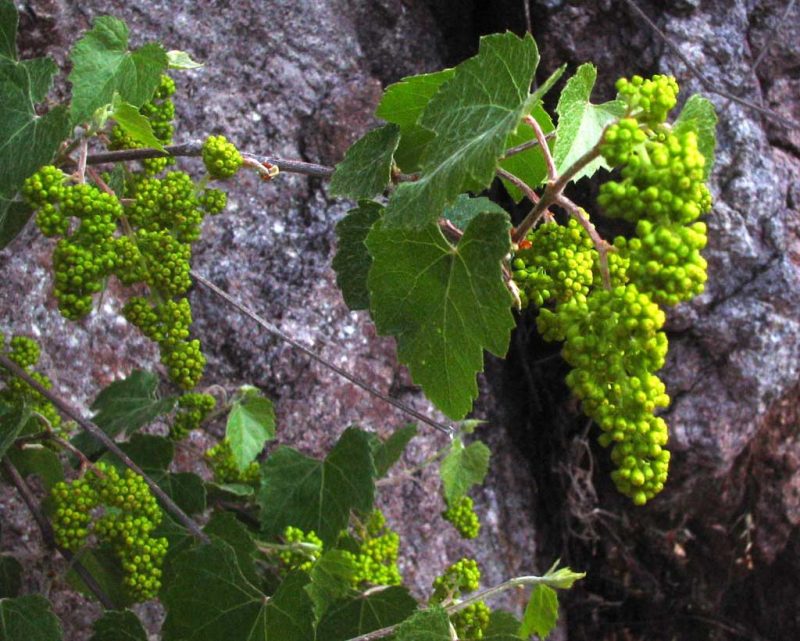
Canyon Grape is a native vine that can work wonders in desert landscaping by providing a lush, green backdrop. This perennial vine is notable for its deep green leaves and small, sweet grapes that are not only a treat for birds but can also be enjoyed by humans when harvested. The vine can grow rapidly, reaching heights of 15 to 20 feet, making it perfect for covering arbors, trellises, or fences, casting shade and cooling the surrounding area. It thrives in well-draining soils and can tolerate dry conditions once established, showcasing its adaptability to both arid and moderate climates. Canyon Grape flowers in the spring, attracting pollinators and adding biodiversity to your garden. Including this versatile plant can add both beauty and functionality to your desert landscape.
Desert Peach (Prunus fremontii)
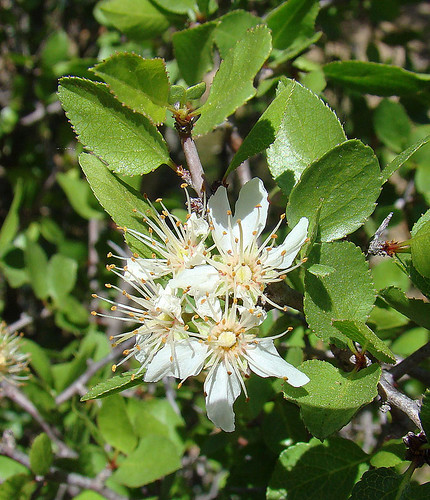
The Desert Peach is a deciduous shrub that offers an array of seasonal interests with its striking blossoms and edible fruits. Growing between 5 and 10 feet tall, it features soft pink flowers in the spring followed by delicious, juicy peaches during the summer months. This plant is perfectly adapted to desert environments, tolerating heat and drought while thriving in various soil types, including sandy and gravelly soils. Additionally, its deep root system aids in soil stabilization and erosion control, making it a practical option for hillsides or slopes. Beyond its culinary benefits, the Desert Peach serves as a habitat for birds and other wildlife, enhancing the biodiversity of your desert garden while providing beautiful seasonal changes.
Apache Plume (Fallugia parviflora)

Apache Plume is a striking shrub that features feathery plumes and small white flowers, adding a unique texture to desert landscapes. Typically growing to heights of 3 to 6 feet, this versatile plant has a graceful, airy quality that perfectly complements the rugged look of desert gardens. The white flowers bloom in spring, attracting pollinators like bees and butterflies, and are followed by distinctive, silvery, plume-like seed heads that persist through the summer. Apache Plume thrives in full sun and is highly drought-tolerant, making it an excellent choice for water-wise landscaping. Its adaptability to a variety of soil types, including rocky and sandy soils, further enhances its appeal. Additionally, Apache Plume’s resilience allows it to establish well in harsh conditions, contributing to erosion control while providing habitat for birds and small wildlife, thus ensuring a vibrant ecosystem within your desert landscape.
Desert Bistort (Bistorta tenuifolia)
Desert Bistort is a unique herbaceous perennial known for its elongated flower spikes that can reach heights of up to 3 feet. The tubular, pinkish-white flowers bloom in summer and are quite attractive to nectar-seeking pollinators, making it an asset to any pollinator-friendly garden. The leaves are narrow and grass-like, adding a delicate texture to the overall composition of the landscape. Desert Bistort does well in well-drained soils and can tolerate dry conditions once established, although it also appreciates occasional irrigation during prolonged dry spells. This lovely plant can serve well in both formal gardens and wildflower meadows, creating a visually appealing and stable environment that supports a diverse array of wildlife.
Winecup (Callirhoe involucrata)
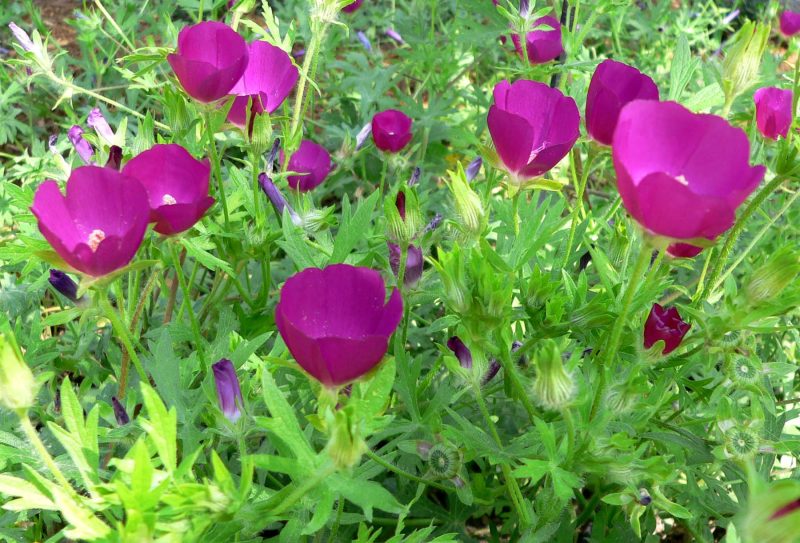
Winecup is a stunning wildflower known for its large, cup-shaped flowers that bloom in vibrant shades of pink to deep magenta. Standing around 1 to 2 feet tall, this perennial plant is a showstopper in any desert landscape, typically blooming in spring and early summer. It thrives in full sun and well-draining soils, demonstrating remarkable drought resistance. The lush, green foliage creates a beautiful contrast with its flamboyant blooms. Winecup plants tend to spread when happy, making them a fantastic choice for ground cover in rock gardens or mixed perennial borders. They not only attract butterflies and bees with their vibrant flowers but also revive the aesthetic appeal of xeriscapes, offering a delightful pop of color when many other plants may be dormant or less vigorous.


